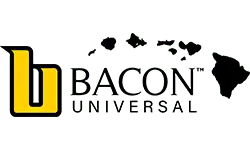Deadly Lahaina fire spread ‘incredibly fast,’ racing mauka to makai within 90 minutes

The fire that destroyed most of Lahaina and killed at least 101 people started at 2:55 p.m. Aug. 8 in the vicinity of Kuʻialua Street and Hoʻokahua Place, mauka of the Lahaina Bypass and Kelawea Mauka Makai Park. Fanned by intense winds churned up by Hurricane Dora to the south, the fire raced to the coastline in 60 to 90 minutes.
Investigators will focus on fire’s early stages as they shift gears from fact-finding to determining the cause of one of the deadliest fires in US history.
“We saw spot fires at the oceanfront within an hour, within about 90 minutes,” said Steve Kerber, vice president and executive director of the Fire Safety Research Institute, during a news conference Wednesday. “So, traveling over a mile within about 90 minutes is incredibly fast.”
The institute’s fact-finding, Phase 1 timeline report, described what happened after the fire started:
“Embers carried by the wind ignited unburned grassland areas downwind from the initial fire location and continued to spread, reaching homes and other structures. From there, the fire spread through direct flame contact, radiant heating and flying embers. The high winds, funneling the fire into Lahaina town and towards the Pacific Ocean, created a conflagration that overwhelmed the town’s limited evacuation routes, some of which were blocked by downed utility poles and electrical lines. At times, people were forced to use the ocean for safe refuge.”
Then, as people fled smoke and flames, they found bumper-to-bumper traffic on escape routes.
The Lahaina Bypass, a primary evacuation route, was one of the roads impacted, the report says. “Smoke pushed low to the ground by the wind made visibility difficult and soon overwhelmed the efforts of police and firefighters to evacuate the area. Many residents found themselves trapped, unable to escape the advancing flames and thick, blinding smoke. On Lahainaluna Road, vehicles became stranded and civilians were trapped by the rapidly approaching fire. A similar scenario played out north on Kahua Street, where the fire’s path of destruction would claim numerous lives.”
A reporter asked Kerber if the blaze known as the “Lahaina PM fire” reported before 3 p.m. could have been started by embers from an earlier fire, referred to as the “Lahaina AM fire” that firefighters reported extinguished at 2:17 p.m.

Kerber said investigators know the time stamps for the two fires, and “as far as what caused or what happened between the two, that is for the ATF cause origin investigation,” referring to the Bureau of Alcohol, Tobacco, Firearms and Explosives.
There is evidence to help investigators. From the vicinity of the first dispatch of the fire’s location, “we have resident video driving north of the area, driving west on Lahainaluna Road, and we have a video showing smoke coming from the area near where the ravine would be behind the homes across from the Lahaina Intermediate School being moved towards the ocean via the wind,” Kerber said. “So we do have confirmation around that time approximately where the fire is. That does not include a specific origin of exactly where it was, that would be for the ATF to include in the report.”
While not saying embers from the earlier fire started the later one, he said: “It was absolutely the same area.”
The report gives glimpses into how firefighters were struggling to contain the fire as it moved from one structure to another. Here’s an example of Maui Fire Department Command communications at 3:37 p.m. Aug. 8 with Relief Engine 11:
“Command: ‘There is one house on Lahainaluna that is fully going now. We need to stop it where you are. That has to be the cutoff there, that road back there.’
“Relief Engine: ‘Copy that Chief, I did move positions. We took that road Kaʻakolu and took a right into a cul-de-sac, and we have some houses threatened on the back side. We are stretching attack lines.’
“Engine 3 to Command: ‘We got a structure fire at Kaʻakolu. We are going to need an engine company over here. All we have is our wildland.’
“Command: ‘Copy, is that on the corner there?’
“Engine 3: ‘It’s up from the corner, just behind the park. It might be multiple structures. Right now we have Kaʻakolu that we are going to lose.’
“Command: ‘Yeah, there are multiple structures going.'”
During the news conference, reporters’ questions quickly honed in on official responsibility in responding to the emergency, but Hawaiʻi Attorney General Anne Lopez said that was not the goal of the Phase 1 Lahaina Fire Comprehensive Timeline Report. Subsequent reports will present the institute’s independent analysis of the fire’s origin, attempts to stop it and evacuate people. A third phase will focus on how to prevent another disaster.

“I am not commenting at this time on the actions of anybody,” Lopez said. “This Phase 1 (report) is so that we can understand what happened on a minute-by-minute basis. How people acted, how government responded, whether it was successful or not is what happens in Phase 2. And, I want to be clear: The purpose, the underlying foundation of this report is not to place blame on anybody. This is about never letting this happen again. That is my focus, and will continue to be my focus.”
In a news release following the press conference, Lopez said the focus of the Phase 1 report and timeline was to identify the facts. Phase 2 will analyze them, and Phase 3 will look at recommendations for the future, she said.
“The purpose of this independent analysis is to find facts and develop new policies and procedures to save lives and property in the future so Hawaiʻi will be a safer place to live for generations to come,” Lopez said.
The independent, third-party Fire Safety Research Institute, part of UL Research Institutes, was retained by the state of Hawaiʻi to assess the performance of state and county agencies in preparing for and responding to the Maui wildfires. The institute has extensive experience researching fire dynamics, structure-to-structure fire spread and near-miss firefighting incidents. Currently, the institute is focused on fires in the Wildland Urban Interface where wildfire moves to impact communities.
The comprehensive Lahaina Fire Report and minute-by-minute timeline focuses on the events that occurred prior to, during and immediately following the Lahaina fire. The report includes sections on preparedness efforts, weather and its impact to infrastructure, and other fires occurring on Maui for the time period beginning at 2:55 p.m. Aug. 8 to 8:30 a.m. Aug. 9.
“The Lahaina wildfire tragedy serves as a sobering reminder that the threat of grassland fires, wildfires and wildfire-initiated urban conflagrations, fueled by climate change and urban encroachment into wildland areas, is a reality that must be addressed with the utmost urgency and diligence – not just in Hawaiʻi,” Kerber said.
The Phase One report and Timeline focus on three main areas:
- Pre-fire conditions – how environmental conditions including climate and weather, vegetation and fuels helped create the situation.
- Fire progression – how more than 12,000 lines of data including 911 calls, radio transmissions and personal photos taken by members of the Lahaina community to inform how the fire spread.
- Emergency response – how organizations responded to the crisis.
Kerber said it’s premature to draw conclusions based solely on the report and timeline and that the institute’s analysis of the facts will result in more details that will be shared in the Phase 2 report targeted for release the end of the summer and Phase 3 completed by the end of the year.
“I want to thank the people of Lahaina for the generosity they showed in sharing their stories, videos and photos with us,” Kerber said. “Their experiences and observations are a valuable part of the data collection and validation process. Their contributions were critical in the development of this report and timeline, and we must also recognize the heroic actions of first responders and civilians alike who were on the ground doing their best to protect people and property during this tragic event.”







_(2)_1750879698184.webp)
